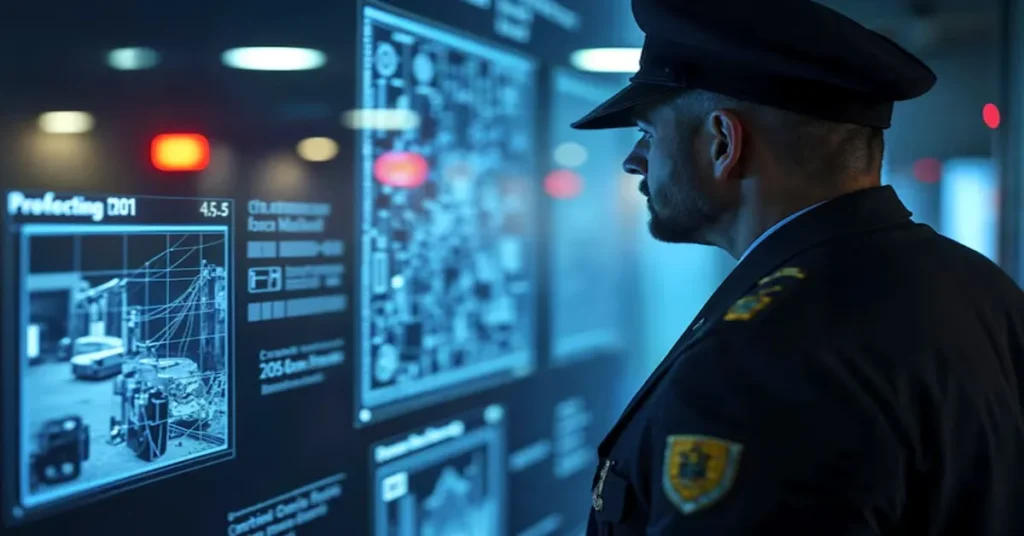Introduction to Kentucky Walmart Police Presence
When you stroll through the aisles of a Kentucky Walmart, you might notice something that sets it apart from other retail spaces: a visible police presence. This phenomenon raises questions about safety, security, and community dynamics. What does it mean for shoppers when officers are on-site? Is it reassurance or an indication of deeper issues? Exploring the Kentucky Walmart police presence opens up a broader conversation about how law enforcement interacts with everyday life in our local stores. Let’s dive into this intriguing topic and uncover what lies beneath the surface!
History of Police Presence in Retail Stores
The history of police presence in retail stores dates back several decades. Initially, security concerns prompted businesses to partner with local law enforcement. This collaboration aimed to deter theft and maintain safety.
As crime rates fluctuated, many retailers began hiring off-duty officers for extra support. The visibility of uniformed officers often acted as a deterrent against potential shoplifters.
In the late 20th century, the trend expanded beyond urban areas into suburban and rural regions. Retailers recognized that shoppers felt more secure with police presence nearby.
However, this practice has evolved over time. Some communities have raised questions about its effectiveness and implications on customer experience. As discussions around policing practices grow, so does scrutiny regarding their role in commercial spaces like Walmart stores across Kentucky.
The Role of Police in Walmart Stores
The presence of police in Walmart stores serves multiple purposes. Primarily, it aims to deter crime and enhance safety for shoppers and employees alike.
Officers often patrol the aisles, keeping an eye out for suspicious behavior. Their visibility can create a more secure environment, making customers feel safer while they shop.
Additionally, police officers may assist with emergency situations. Whether it’s a medical issue or a potential theft incident, having trained personnel on-site can facilitate quicker responses to crises.
Community engagement is another significant aspect. Officers often interact with local residents during their shifts, fostering relationships that benefit both the store and the surrounding area.
However, this heightened security presence also raises questions about how it impacts the shopping experience. Some customers appreciate the added security; others may feel uneasy being monitored as they browse through aisles filled with everyday necessities.
Controversies Surrounding Walmart’s Use of Police
Walmart’s partnership with local police departments often raises eyebrows. Critics argue that this collaboration can lead to an over-policing atmosphere in stores. Many feel it targets vulnerable communities, intensifying racial profiling concerns.
Some incidents have sparked outrage among shoppers and activists alike. Reports of aggressive policing tactics within Walmart locations have led to protests and calls for reform. These actions create a tense environment, making customers feel unwelcome.
Additionally, the financial implications cannot be overlooked. Taxpayer dollars fund police overtime spent at Walmart, which many view as an improper use of public resources. This arrangement begs the question: should private businesses rely on public law enforcement?
Moreover, while some believe increased security deters crime, others argue it fosters fear rather than safety. The ongoing debate highlights the complexities of balancing security needs with community trust and respect for civil liberties.
Discussions about these issues continue to evolve as more people become aware of their implications in everyday shopping experiences.
Impact on Customers and Employees
The presence of police in Kentucky Walmart stores creates a complex atmosphere for both customers and employees. For shoppers, the sight of officers can evoke a sense of security. Many feel reassured knowing that law enforcement is nearby, ready to address any issues that might arise.
On the other hand, some customers perceive this presence as intimidating. They may worry about being judged or profiled simply while shopping for groceries or household items. This tension can affect their overall shopping experience.
Employees often have mixed feelings about police visibility at work. While they appreciate having support during challenging situations, there are concerns regarding unnecessary escalations. The delicate balance between safety and comfort remains a topic worth exploring further within these retail spaces.
Alternatives to Police Presence in Walmart Stores
Walmart has been exploring different approaches to address security concerns beyond traditional police presence. One alternative involves hiring trained security personnel who can manage situations with a focus on de-escalation rather than enforcement.
Additionally, community engagement initiatives can foster a sense of safety. Collaborating with local organizations and neighborhood watch groups empowers communities to take an active role in maintaining order within the store environment.
Investing in technology is another option. Enhanced surveillance systems and smart cameras provide real-time monitoring without the need for constant police involvement. This tech-driven approach allows for quicker response times while minimizing confrontations.
Implementing employee training programs focused on conflict resolution equips staff members with skills to handle potential issues effectively. Creating a safer atmosphere starts from within, where employees feel empowered to act before situations escalate into something more serious.
Conclusion: Evaluating the Effectiveness and Necessity of Kentucky Walmart Police Presence
The presence of police officers in Kentucky Walmart locations raises important questions about safety, community relations, and retail environments. While the goal is to deter crime and ensure a secure shopping experience, it also comes with complexities that cannot be overlooked.
Many customers appreciate seeing law enforcement as a reassuring figure during their visits. However, others may feel uneasy or targeted by an increased police presence.
Balancing security measures with community trust is essential for retailers like Walmart. Exploring alternative solutions could address concerns while still ensuring safety. Ideas such as increased staff training or enhanced surveillance technology might reduce reliance on police involvement.
Evaluating the effectiveness and necessity of this approach requires ongoing dialogue among stakeholders—Walmart management, local law enforcement, customers, and community members alike. As these conversations unfold in Kentucky communities, they will help shape the future dynamics between retail spaces and public safety initiatives.


